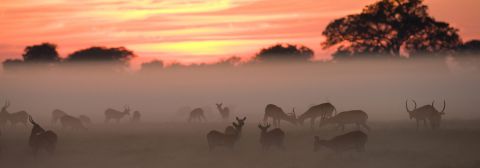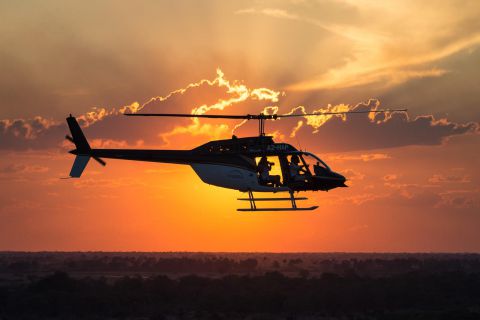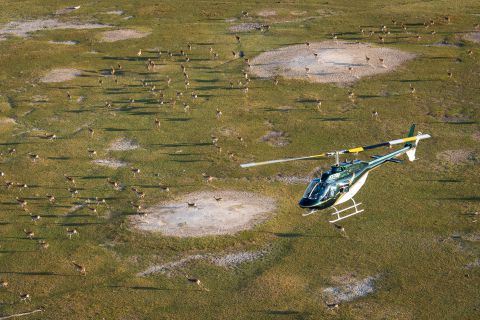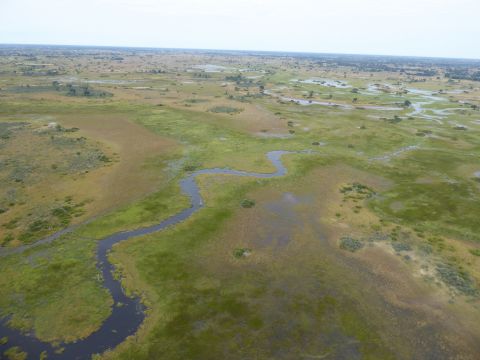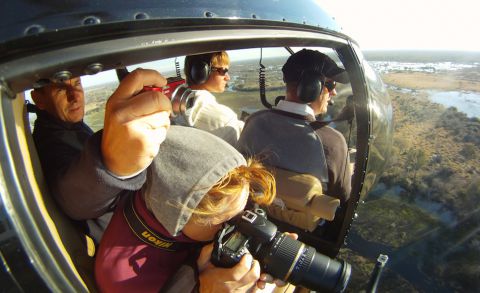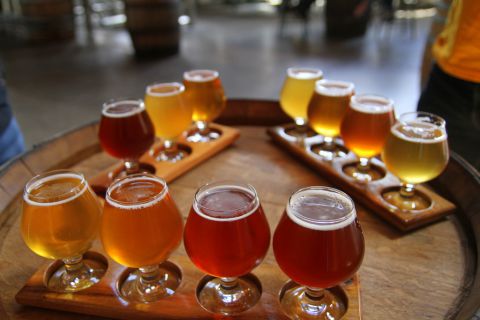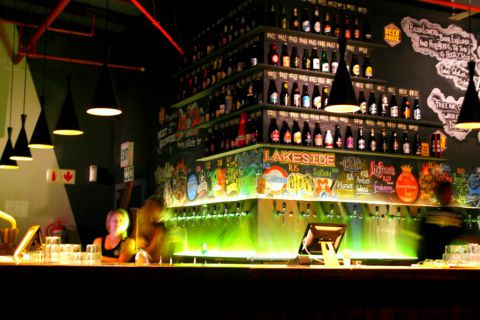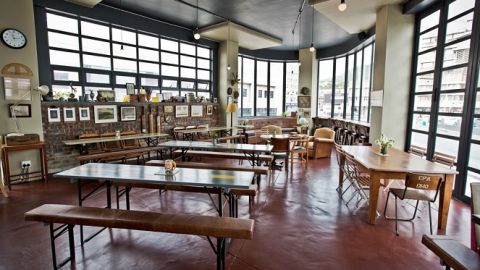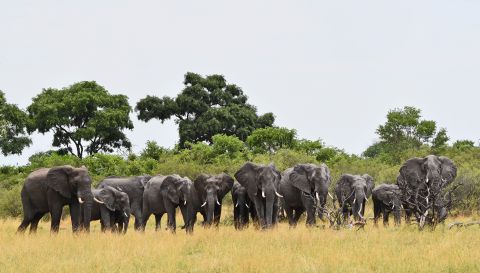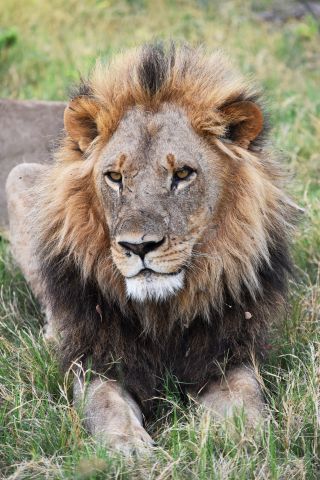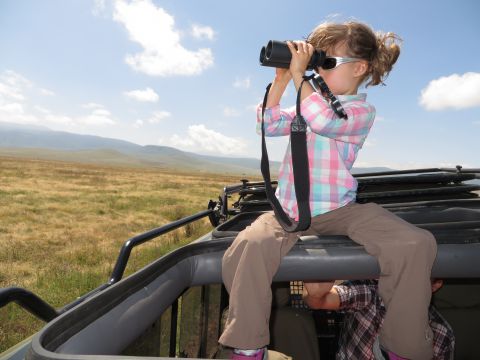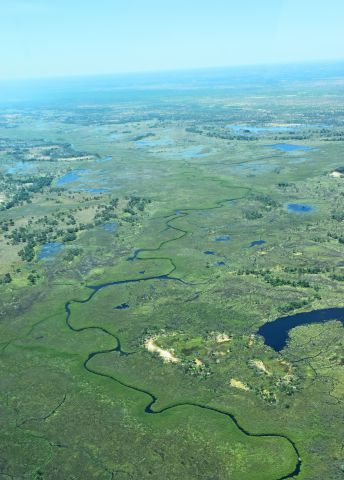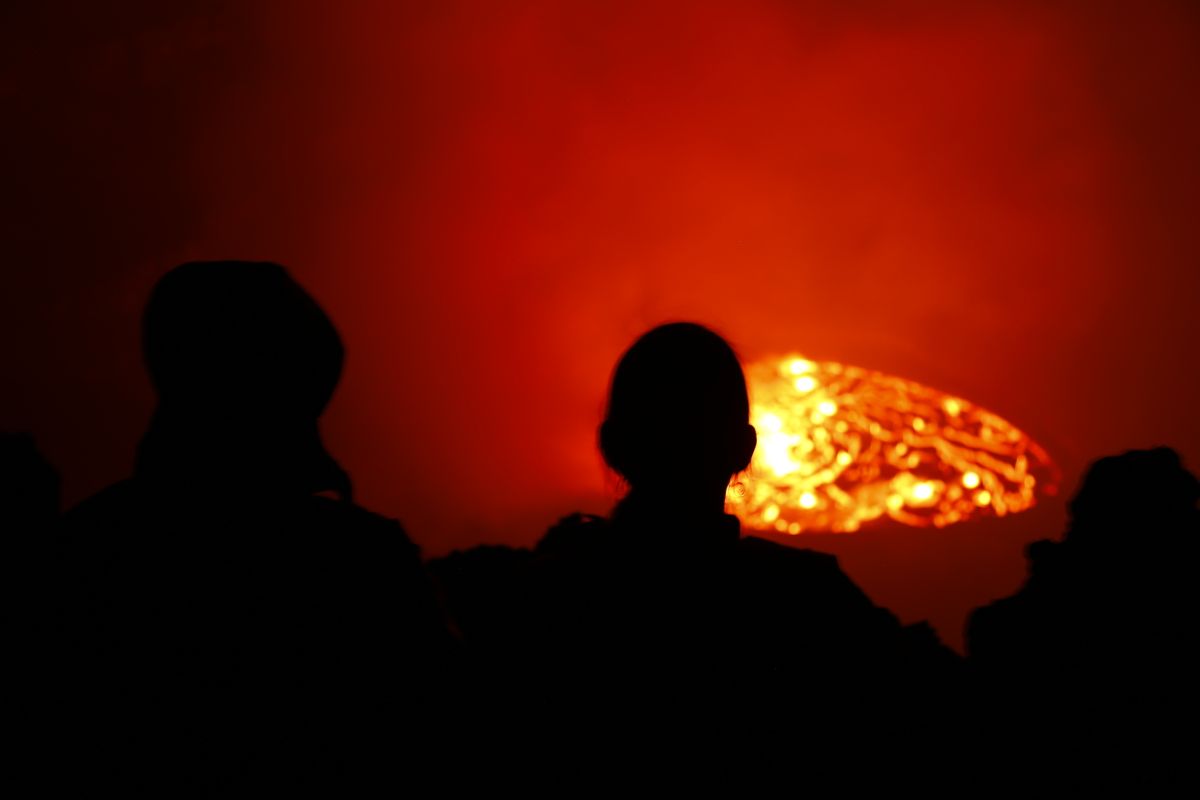
Around the Next Corner & Other Tales
Lava, Gorillas & Rainforests: Thrills in the DRC
Posted 2017-11-09

My inspiration for visiting the Democratic Republic of Congo was the Netflicks movie “Virunga.” After finishing the documentary I filed the destination away into the back of my brain as somewhere I wanted to go when the infrastructure improved. Fast forward a few years and Virunga National park now has five different locations to stay at ranging from the spacious and luxurious Bukima Lodge to the relaxing tented camp on Lake Kivu – Tchegera Island camp.
As I starting planning my trip I mostly focused on seeing the gorillas but I quickly realized as I looked at the variety of activities available that Virunga National Park had quite a bit to do. What started as a three day trip quickly grew to 7 days as I added on days so that in addition to the gorilla trekking I could visit the park headquarters, the gorilla sanctuary, trek to view the habituated chimpanzees, and most importantly climb an active volcano and spend the night on the rim.

My husband and I spent two fabulous days trekking the gorillas. The park has on average 10 groups they will visit. Each morning the park rangers bring all trekkers in the headquarters while they discuss the groups, behaviors they have seen, the last known location of each group and then assign you to a group to view based on your physical capabilities. On our first day we trekked to the Rugendo group. We found them not far from the park boundary. The group was in a playful mood. We had several juveniles that were playing on low tree branches alternating between swinging back and forth towards us and pushing each other off the limbs. A young baby entertained us for our hour as it struggled walking amongst the forest floor tripping over the roots every few feet. On our second day we trekked to the Himba group and our hour was spend watching them nap and eat. At one point one of the silverbacks mocked charged another silverback in the group and the forest floor shook with their movement – it was so exciting to watch. It was a perfect two days and we were grateful for the variety of behaviors we witnessed.
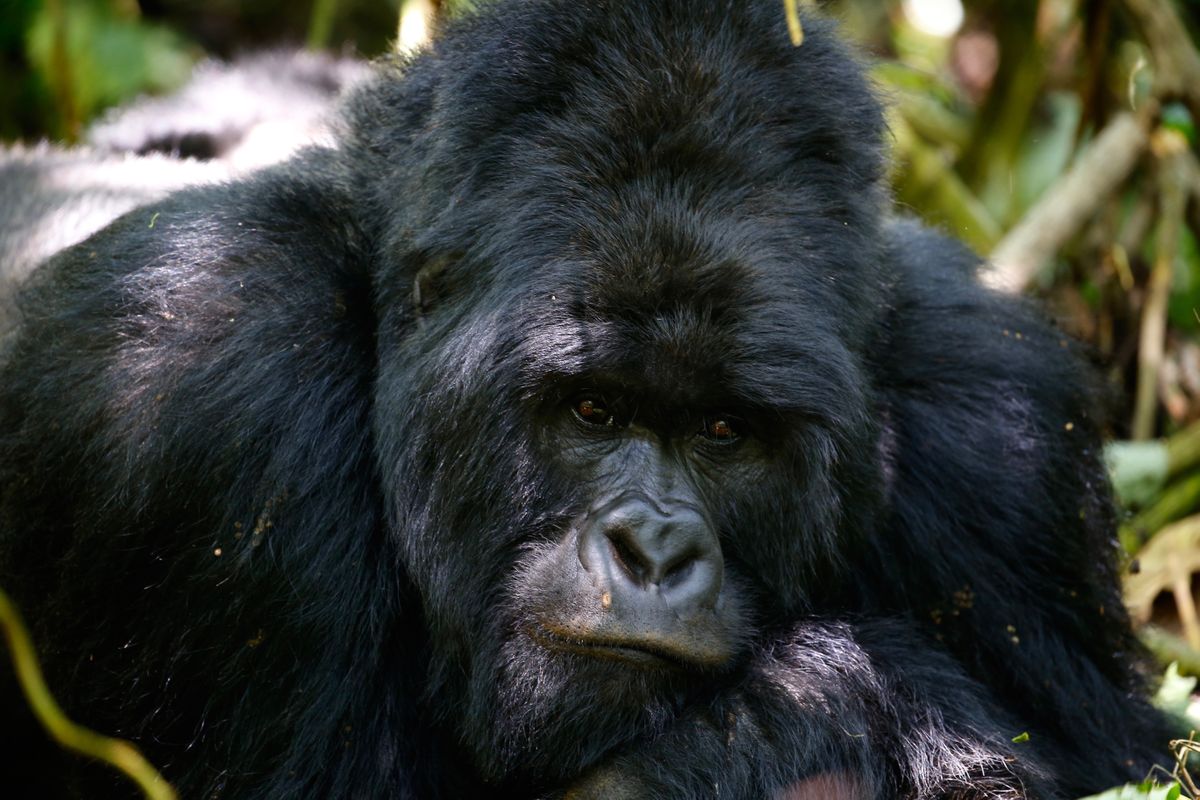
One of the big highlights of our trip turned out to be our “down” day. We were up at 500am to trek the chimpanzees. After several hours of walking in the forest we finally found them hanging out in the trees above the park headquarters (1000 feet from where we started.) We spent the rest of the day exploring the park headquarters, visiting the sanctuary where they care for mountain gorilla orphans, meeting the children of surrounding villages, exploring some caves, visiting a coffee plantation and finishing up with a visit to the newly built Rangers widows sewing workshop to provide employment for the spouses of fallen rangers.
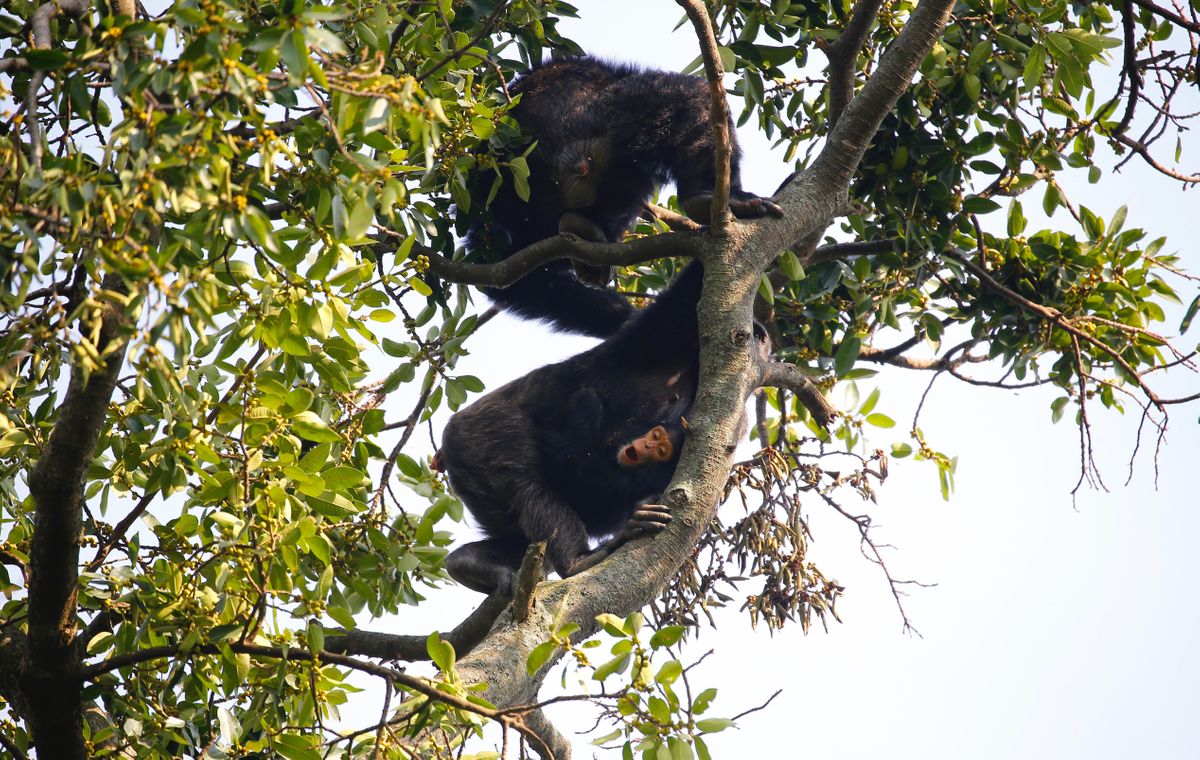
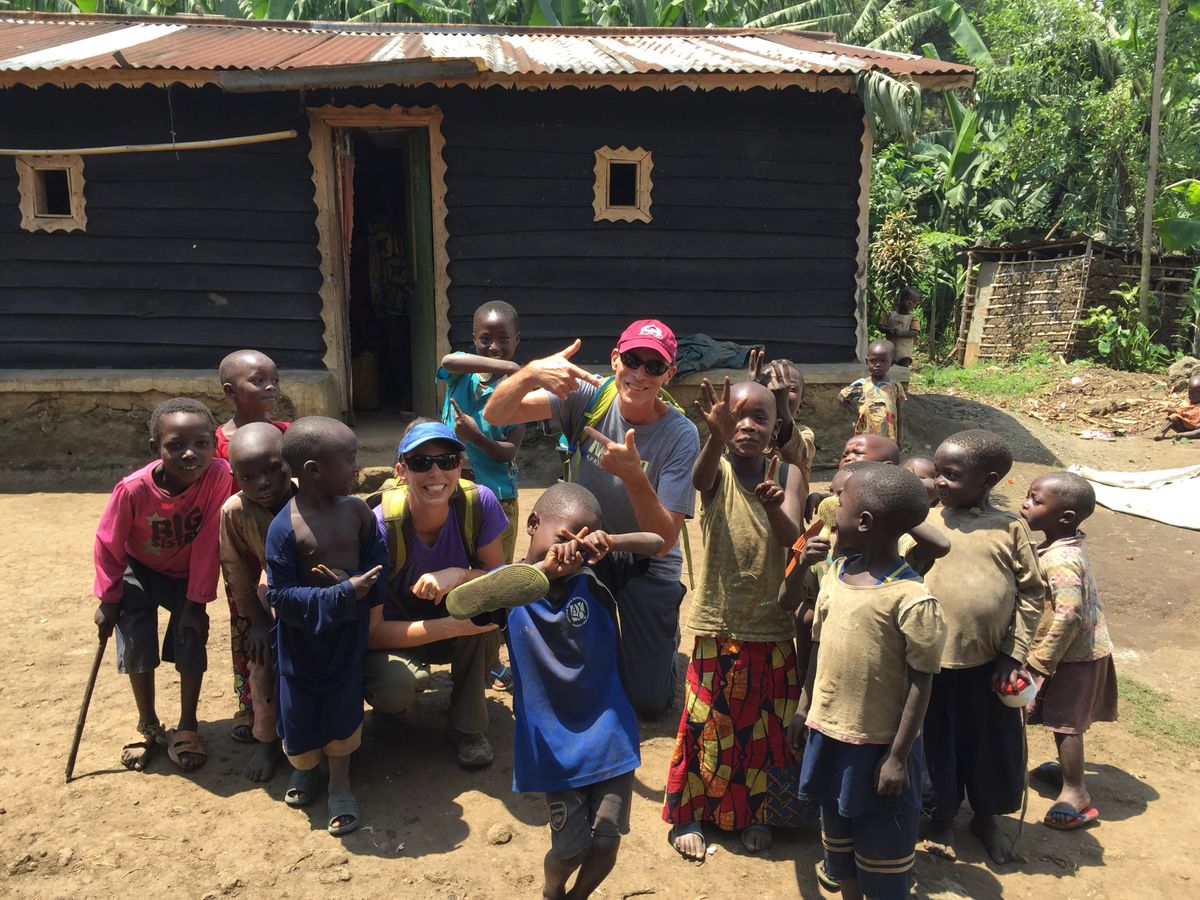
Our final two days were spent at the active volcano - Nyiragongo. The five hour climb straight up the side of Nyiragongo Volcano is well worth the reward! After catching my breath and inching my way cautiously to the rim I was rewarded with a view of the World’s largest lava lake lying some 350+ meters below me in the crater. The hot gases exploding and the mosaic pattern created within the lake are stunning to say the least. As night fell and the intensity of color increased I found myself in a hypnotic state watching the glowing cracks in the crusted service of the lake change patterns – it was very difficult to break away to get some sleep.
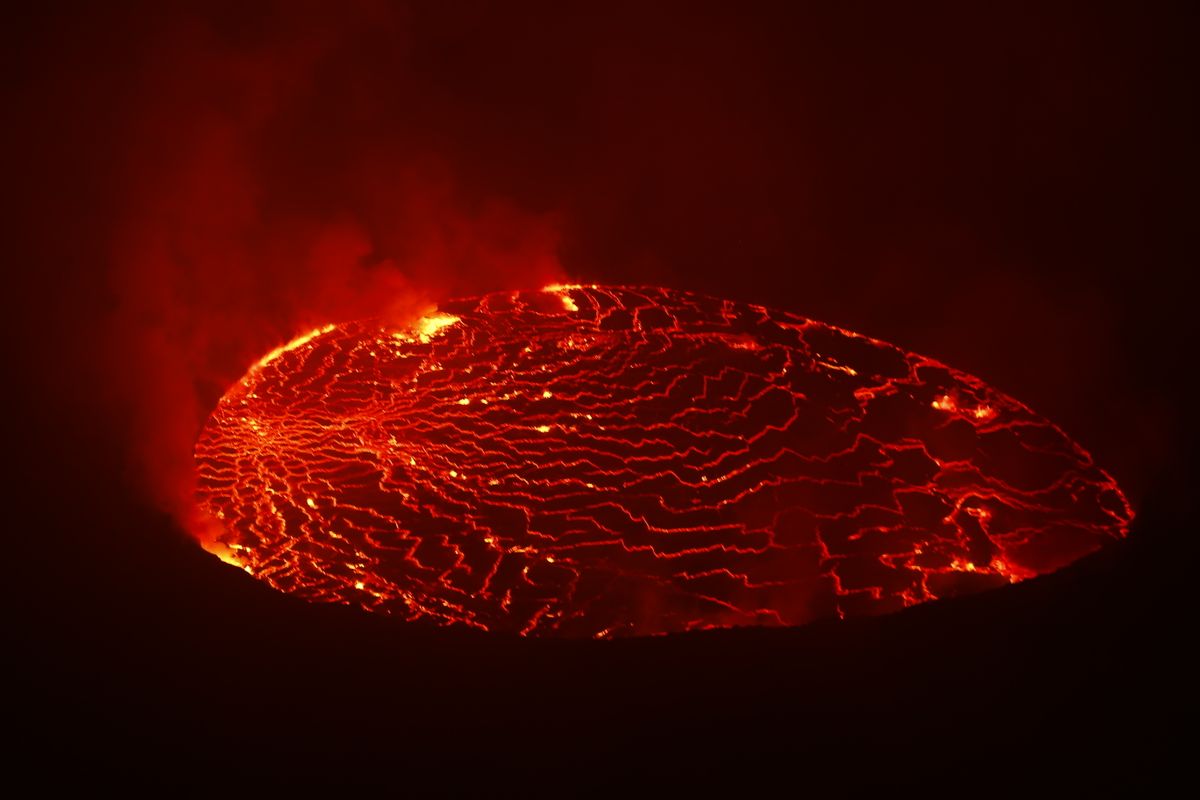
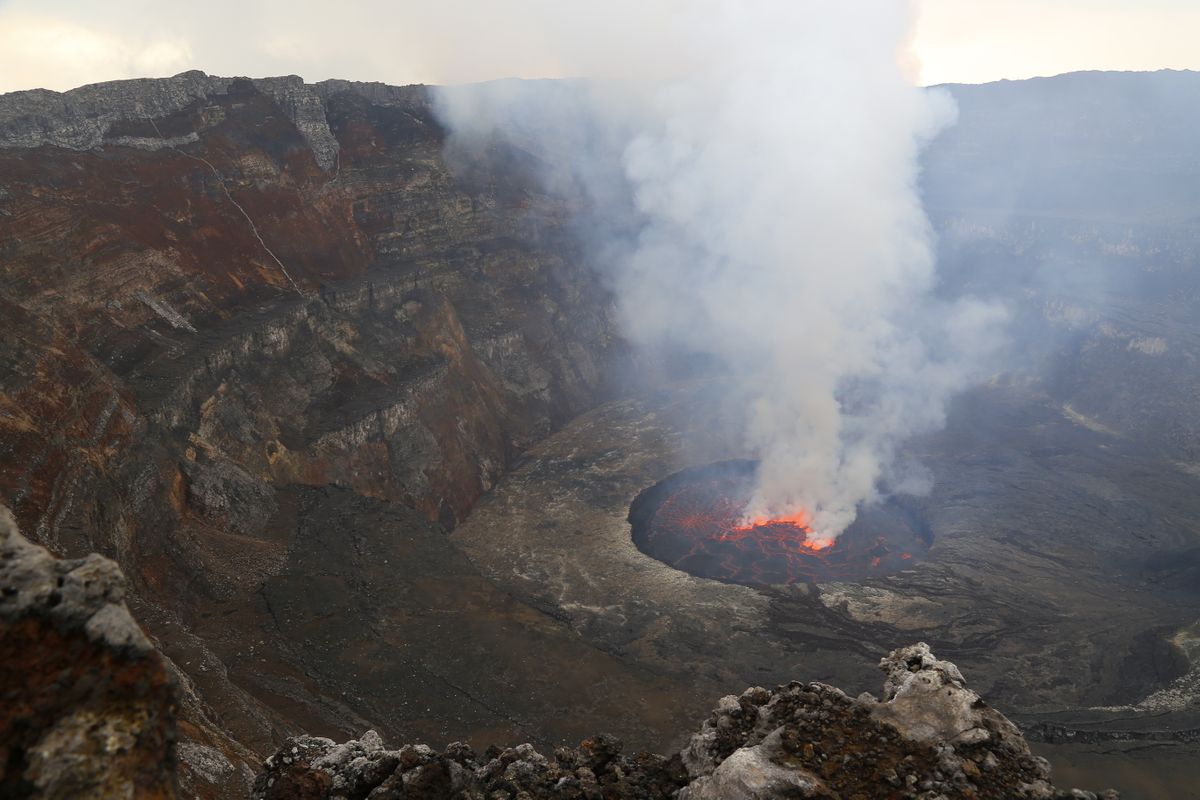
Photos & text by Suzanne Spencer
A Return to Rwanda
Posted 2017-10-28
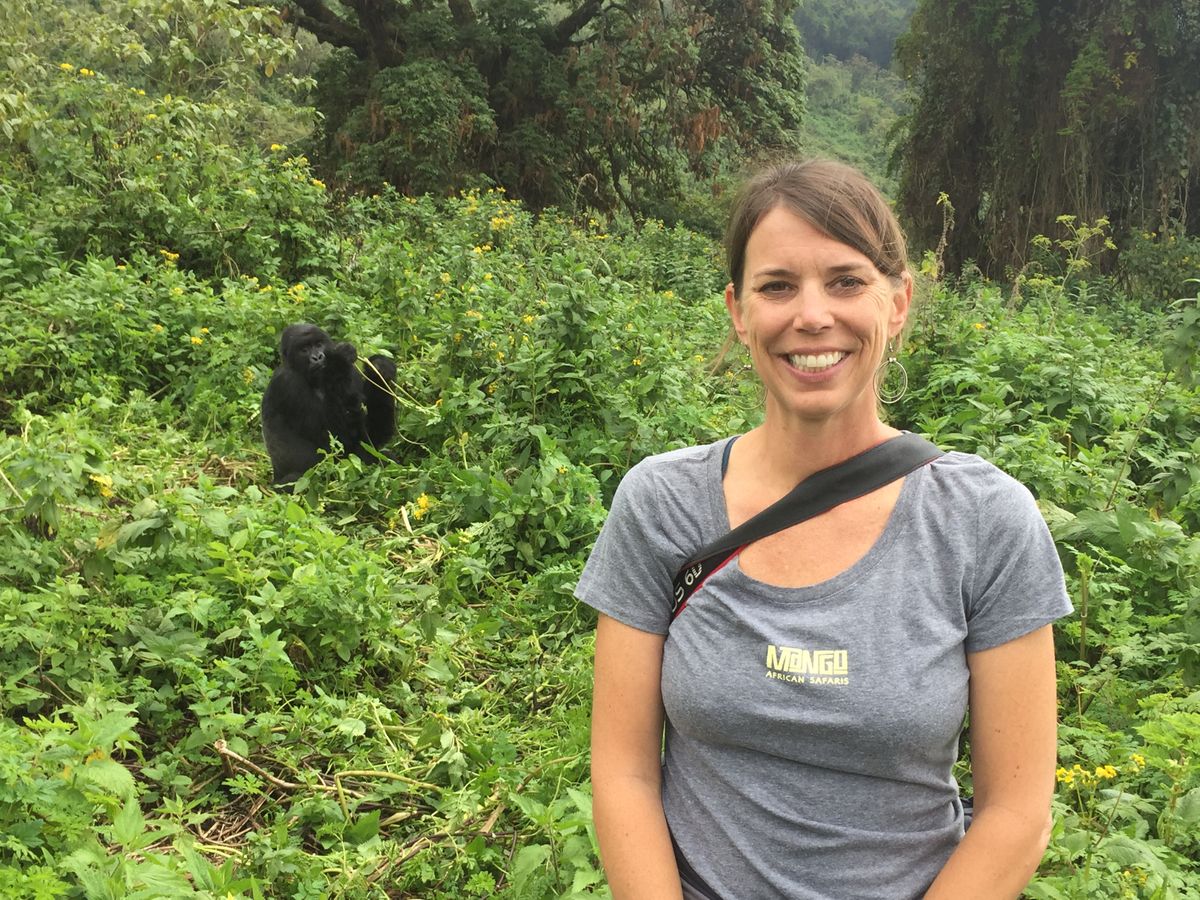
I was thrilled when I was presented with the opportunity to attend the annual Kwita Izina - a weeklong conference and discussion on conservation which culminates in Rwanda’s Gorilla naming ceremony. On September 1st - 18 honored attendees ranging from researchers to the CEO of the Dian Fossey Gorilla Fund were given the opportunity to give a name to 14 infant gorillas and 4 adult gorillas who have joined groups in Rwanda from other locations. The names given are to be an inspirational message or a special meaning and are often suggested by the trackers and Rwandan Park authorities. The ceremony however is so much more than just the naming. It is national holiday in Rwanda where tens of thousands of Rwandan’s come together to celebrate Rwanda’s rich biodiversity and conservation efforts that focus on the well-being of its people while preserving and hopefully increasing the home of the Mountain Gorillas in Volcanos National Park.
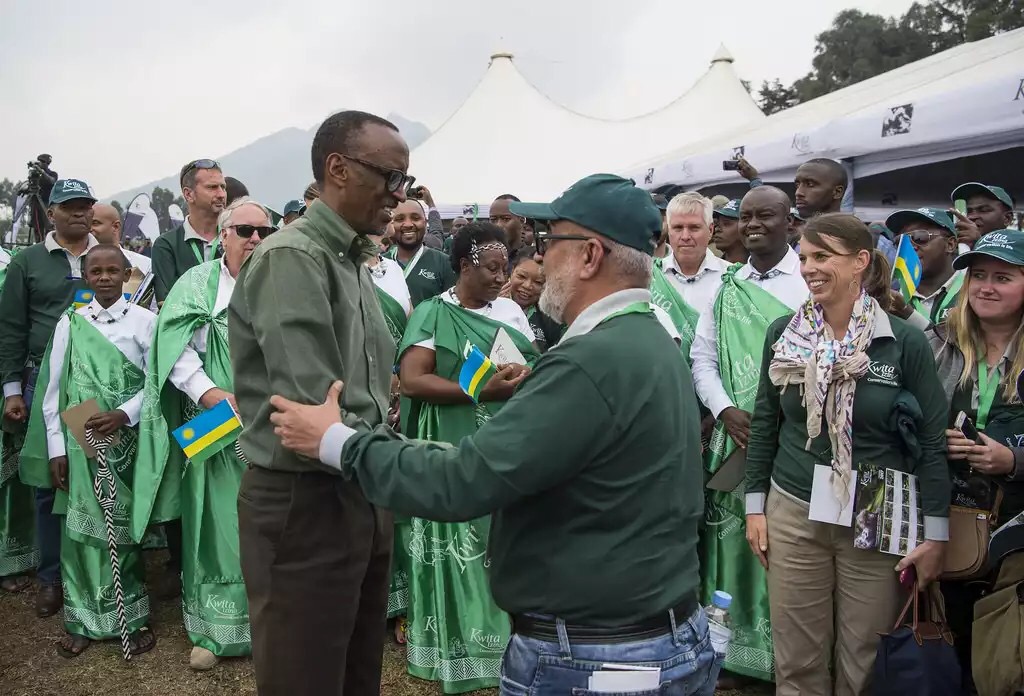
The speeches from various Rwandan leaders including the honorable President Mr. Paul Kagame were inspirational. The speakers focused on the need to increase the land area as the endangered Mountain Gorilla population grows. It is a very exciting time to be able to see the increase when for many years the decrease in population was occurring at a rapid rate.
In addition to the big highlight of attending the ceremony and meeting the President I was able to participate in a Gorilla trek and spend an hour observing the Titus group. The group was spread out with some eating, some napping and a bit of grooming occurring. The youngest of the group was one of the ones to be named the next day – Macibiri (see photo.) Observing gorillas is one of my favorite wildlife interactions – it is truly magical!

Another highlight was spending an evening at the brand new Bisate Lodge. Warm and welcoming are two words of many that come to mind in describing this incredible new lodge. The layout of the rooms are spacious with large windows to look out to see the beautiful views of Bisoke Volcano. The fireplace in the middle of the room between the bedroom and the bathroom kept me cozy warm all evening. The staff was absolutely lovely and a highlight of my stay.
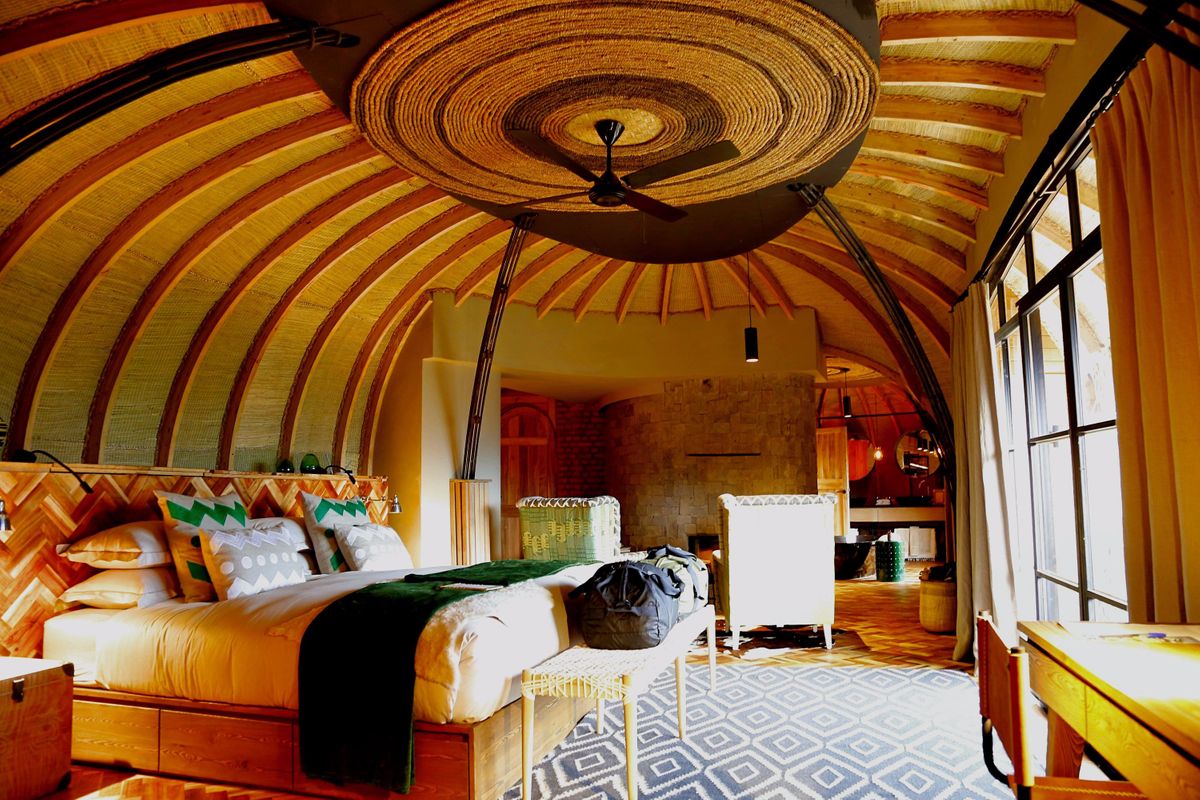
I have seen quite a bit of change in Rwanda over my last few visits. Kigali has grown in leaps and bounds and is becoming a cosmopolitan city with great restaurants and shops. The road conditions have improved greatly and driving all around the country on smooth tarmac makes travel easy and enjoyable. However, the gorilla trekking has remained the same great quality over the years led by knowledgeable park rangers, 10 amazing groups to observe and a good trail network. I always look forward to visiting Rwanda.
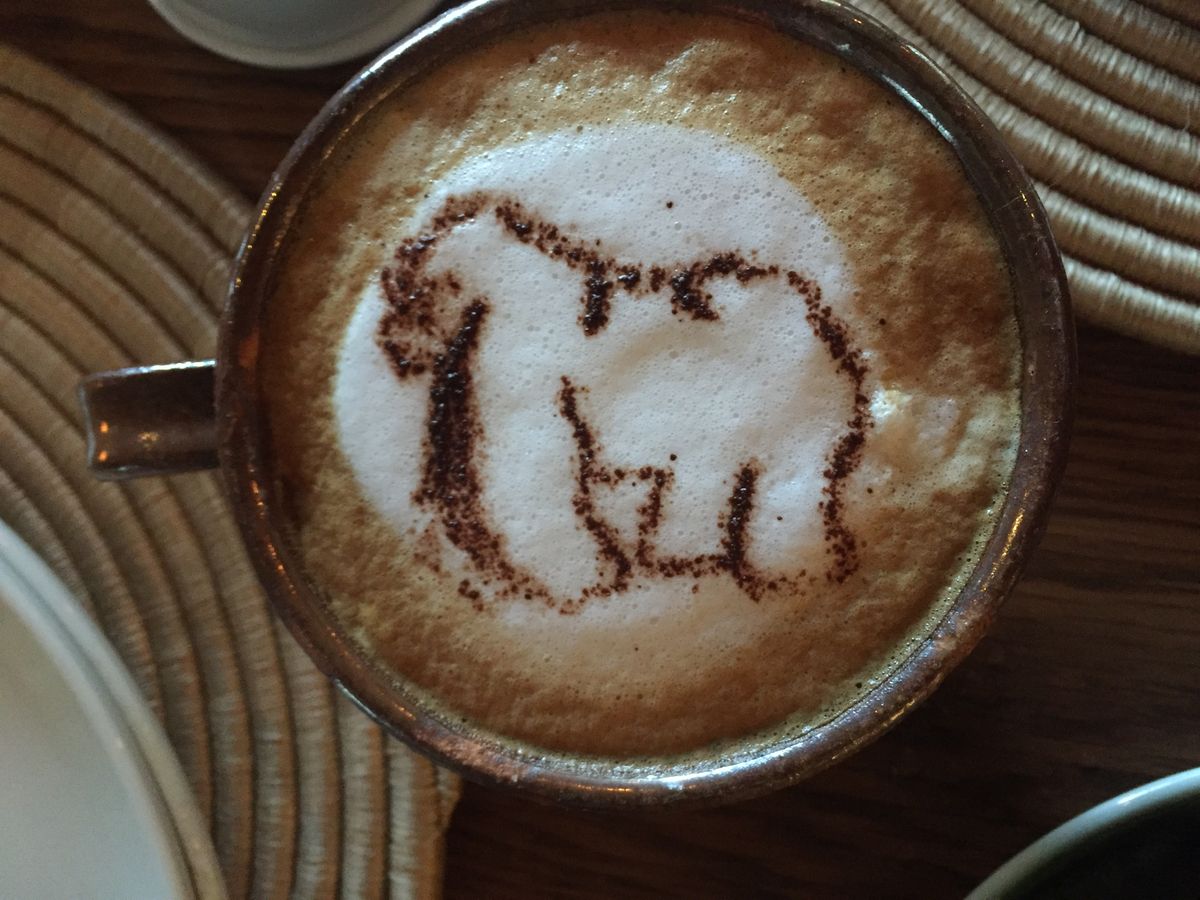
Photos & text by Suzanne Spencer
Discover the Rare: Busanga Plains
Posted 2017-09-27
Destination: Busanga Plains, Zambia
Zambia is a destination that has largely remained off the radar in the safari industry. It's a land where the wildlife are abundant, the landscapes are ancient and evocative, and the people are warm and welcoming. At Busanga Plains you can witness the beautiful rhythms of life unfolding on the savannah before your very eyes. Float high above the sprawling grasslands, moving silently in a hot air balloon, somewhere between earth and sky, between atmospheric silence and the symphony of life below.
A lone elephant wandering the plains, a pride of lions hunting with power and grace, and a herd of puku a hundred strong - these are just a few of your daily sightings in Busanga. Experience this wonderous destination for yourself with a stay at Shumba Camp or Busanga Bush Camp.
Until you visit for yourself, immerse into the Busanga magic with this video:
Mango's Recipe Box: Moroccan Cornes du Gazelle
Posted 2017-09-14
Moroccan Cornes du Gazelle
One of my favorite parts of traveling in Morocco is the food. What a wonderful way to experience the culture of a place, the life of the people one tasty meal after the next.
Moroccan meals can start with luscious lentil soups. Hot bread. A myriad of salads where each vegetable is seasoned and treated differently. Next comes the tagines; meats cooked in the over drowned in rich sauces and flavor combinations – chicken with preserved lemons and green olives and lamb with prunes were two favorites. Piles of fluffy couscous. Pigeon Pie. Desert. Pride and gracious hospitality meant that it was common to be physically uncomfortable by the end of every meal. We were just too full.
But over a famous cup of sweetened peppermint tea came the cookies. We were forced to overcome our discomfort and indulge further.
Pastries are filled with dates, poppy seeds, almonds, butter and powdered sugar. Each shapes according to tradition and melting in your mouth. I found myself thinking about the Hornes Du Gazelle long after our trip was over and had to take things into my own hands.
A thin pastry rolled around a gorgeous filling made of ground almonds, powdered sugar and a hint of orange blossom water shaped to emulate the horns of a gazelle. The baked pastry is crispy beneath a dusting of powdered sugar, the filling floral, rich and sweet all at the same time.
I found several utube videos in French demonstrating the technique. After a few tries, I perfected the technique and added them to the list of annual Christmas cookies and they were a hit. If you remember these from your travels to Morocco, you should also try them at home or maybe it is time to visit this dynamic land of many flavors and colors for a real bite.
Cornes du Gazelle
INGREDIENTS FOR THE FILLING:
· 2 ½ cups (10 ounces) blanched almonds
· ¾ cup confectioners' sugar
· 2 tablespoons orange blossom water
· 2 tablespoons clarified butter, melted
· 1 egg white
· ½ teaspoon ground cinnamon
· 1 teaspoon finely grated orange zest
FOR THE PASTRY:
· 2 cups all-purpose flour
· 3 tablespoons clarified butter, melted
· 1 egg yolk
· 2 teaspoons orange blossom water
· Pinch of salt
FOR THE COATING:
· Butter for greasing baking sheets
· ¼ cup orange blossom water
· 1 ½ cups confectioners' sugar, sifted, more for dusting
PREPARATION
1. For the filling: In a food processor, pulse together almonds and confectioners' sugar until powdery. Add remaining filling ingredients and continue to pulse until mixture forms a stiff paste. Mold paste into a ball, wrap well and refrigerate for at least 1 hour (and up to two days).
2. For the pastry: Using an electric mixer, mix flour, melted butter, egg yolk, orange blossom water and 2 tablespoons cold water until combined. With mixer running, add 2 to 4 tablespoons more water, as needed, until dough just comes together. Continue to beat until dough becomes smooth and elastic, about 2 minutes. Cover bowl with a damp towel or plastic wrap and leave at room temperature for at least 15 minutes and up to 2 hours.
3. When ready to bake, preheat oven to 325 degrees. Grease 2 baking sheets.
4. Divide dough in half and cover one half with damp cloth. Transfer other half to a lightly floured surface and roll it to 1/8-inch thick. Cut dough into 3-inch rounds with a cookie cutter.
5. Using your hands, roll two teaspoons of filling into a ball and place in center of round. Repeat, filling all dough circles. Using a pastry brush, lightly brush border of each with water. Fold bottom of dough over filling, forming a half-circle, and press edges to seal. With tip of a sharp knife, make three small diagonal slits on top of each pastry. Bend pastries into a crescent shape and transfer them to baking sheets, about 1 1/2 inches apart. Roll out remaining dough, and repeat. Transfer pastries to oven and bake until pale golden, 20 to 25 minutes. Let cool for a few minutes.
6. Dust pastries with additional confectioners' sugar, and serve.
A Modern View of an Ancient Land
Posted 2017-06-29
Helicopters over the Okavango Delta
By Brian Huggins
As part of my recent trip to Botswana, I was very lucky to take a scenic flight with Helicopter Horizons over the Jao Reserve in the Okavango Delta. I’ve been to this reserve several times, and every time I get the best feeling from the area. I’ve come to expect a great time there, but as is true with nature, there are always new surprises for you no matter how many times you’ve seen a place. This helicopter excursion gave me a fresh perspective and appreciation for this spectacular ecosystem.
Taking off from the Jao airstrip, we flew over the delta in a Bell jet Ranger helicopter. Cruising very low over the delta, the pilot was able to remove the doors, giving us unobstructed views of the wildlife below. Beneath us monster crocs sunned themselves on the channel banks, a herd of buffalo spread out like spilled ink, and bull elephants strode along, still regal as ever from our lofty position. For thirty exhilarating minutes we zoomed across the delta, taking in a land as old as time from this thrillingly modern perspective. Truly amazing!
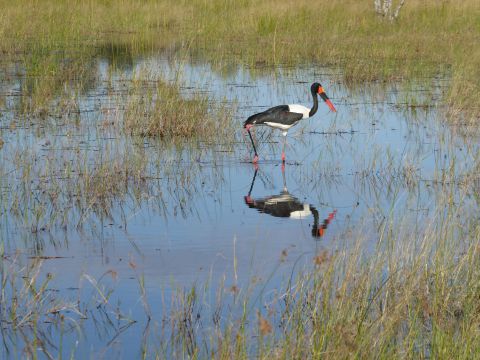
I cannot recommend this type of excursion enough. These scenic flights can be incorporated into any safari and will absolutely add to the experience. Another fun option is to have a helicopter transfer flight from camp to camp instead of a light aircraft. The costs involved are relative to the normal light aircraft transfer flight so there are no huge extra costs involved by adding it in.
My final tip: I’m no great photographer, but bring your cameras – the photo-ops are fantastic!
All photos of helicopters from Helicopter Horizons
The Conservation Lab 2017
Posted 2017-06-25
By Brian Huggins
Mango African Safaris was honored to attend the second annual Conservation Lab. The event was held 29 & 30 APR 2017 at Spier Wine Farm in Stellenbosch, South Africa. This invitation-only event builds bridges between 100+ leaders from the key sectors of conservation, travel, technology, behavioral sciences, philanthropy and government. The Conservation Lab creates optimal conditions for creative thinking and collaborative innovation with the ultimate goal of creating a brighter, more sustainable future for Africa’s wild areas. Wow, quite an event to be a part of. Mango prides itself on staying at the forefront of ecotourism, helping ensure that these beautiful wild areas remain for generations to come. It's not enough to know about the latest camps opening up, Mango strives to actively work towards ecotourism reaching its full potential for supporting wildlife conservation.
The theme this year was to ‘Fight our Way Back’. The cast of attendees was led by famed archeologist, conservationist, and politician Dr. Richard Leakey. In his opening remarks to the group, he said that we are not too late, but that the task ahead will be very difficult. If we want to save the many shrinking wildlife areas and habitats for future generations, then we much act now. Collaboration between key sectors is essential if positive, long-term changes are going to happen. Events such as the Conservation Lab provide the much-needed chance to open lines of dialogue between some of the greatest minds in these areas.
My personal highlight was the final morning, when I found myself with a few minutes of one on one time with Dr. Leakey during breakfast. Having always wanted to meet him, and armed with loads of questions about his life, wildlife conservation and much more, I was pretty excited. Needless to say, I was a bit less excited when all we talked about was politics and the current administration here in the US. Oh well, better luck next time!
Who needs wine? Sipping my way through Cape Town's craft breweries
Posted 2017-06-19
By Brian Huggins - craft beer enthusiast, spicy food lover, and safari specialist
Being from Portland, Oregon means I’ve been exposed to the craft beer scene for over 25 years (perhaps longer than it may have been legal). Sitting at the heart of our local culture, craft beer has become synonymous with Portland. Whenever I return from traveling, a frosty glass of local brew welcomes me home. However, over the last few years, Cape Town’s own craft beer scene has really been taking off. It’s been fun to explore the burgeoning scene, and I have willingly embraced my obligation to seek out the latest and greatest for my clients. I think they call this a job perk…
During my most recent trip to Cape Town I realized that, like most of the US and Portland especially, the craft beer scene is now mainstream there. What fun! One of my favorites was the aptly named Beerhouse on Long Street, right in the heart of the city. This spot is famed for its ‘99 bottles of beer on the wall’ and a great tap list of local suds. Expect a party!

As a local legend, the Cape Brewing Company (left) is a must-do for any craft beer lover. It’s one of the largest craft breweries in the region, and produces an excellent line up of Pilsner, Lager, Krystal Weiss and Amber Weiss, along with something seasonal. Another local spot to check out is Devil’s Peak Brewing Company (right). This is spot opened just a few years ago, but has already developed quite the reputation for their ales. The taproom has good energy, and tasty grill menu to boot.
For an off-the-beaten-path gem, you have to try the Woodstock Brewery. It’s located a bit father way from the tourism areas, in Woodstock…imagine that, but it’s more than worth it! Expect a locals’ vibe with a solid year-round tap list and good dining options. Look out for the special combos that pair an entree and a house brew.
While these are a few of the most well-known local breweries, there are countless more, most of which I haven’t even heard of yet. I’ve just started to scratch the surface of the craft brew scene in Cape Town, but I promise to see this venture through – all in the name of work, of course.
Ecotourism & Wildlife Conservation
Posted 2017-05-05
Mango Safaris staffer, Kelsea Lee, is currently researching the role of safari ecotourism in creating support and advocacy for wildlife conservation in Africa.
Please help her out by completing a short survey on travel & wildlife conservation. It'll take 2 minutes max and is completely anonymous.
Click here to complete the survey!
Thank you for your help!
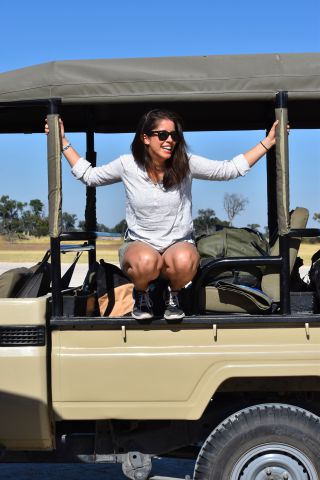
All photos by Kelsea Lee
The Best Safari Binoculars
Posted 2017-04-27
Do you really need binoculars?
Going on safari is an adventure-lovers dream. You’ll spend your days exploring the wilderness, seeking out wildlife and soaking up the wonderful bush wisdom of your guides. A camera is a given – you need to capture those incredible moments, but do you really need a pair of binoculars? In short - yes.
A good pair of binoculars will enhance your safari experience and expand the way you perceive the bush around you. There will be many times when the wildlife is close, but there will be others when they’re at a distance, and you’ll need a great pair of binoculars to get a better view. Or maybe you’ll just want to glimpse the intricate details of an animal – the delicate patterns of a leopard’s fur as it sleeps in a tree, the thick fan of eyelashes on an elephant, or an oxpecker pulling a tick off the back of a zebra. You don’t want to miss any of those unique moments.
So you’ve decided to go for it, but how do you choose the right pair? What magnification is best? What brand is most reliable? And then there’s always the question of balancing price with likelihood of use. Sure, you could shell out a hefty amount and get a top-of-the-line pair, but how often are you going to use them again? However, you also don’t want to scrimp and get a pair that end being useless.
Well, we’ve done the legwork and found some fantastic options for you.
Brand
Let’s start broad – which brands should you be looking at? There are always a few that pop up repeatedly for their reputation: Nikon, Vortex, Leica, Avalon, Swarovski, Bushnell, Minox, Steiner, and Zeiss. If you go with any of these, you’ll be assured of purchasing a quality product.
Magnification & Lens Size
Now comes the (literal) fine print on the box. What do the magnification and lens size mean and which levels are best for safari? Let’s use an example of 8x32 binoculars. The 8x means you’ll magnify the image 8 times its normal size, using a 32mm sized lens.
An ideal magnification for safari is 8x to 10x. This will give you a good amount of magnification without destabilizing the image. Any less wouldn’t be worth the extra weight of bringing along binoculars, and any more means your slightest hand movements will create shaky images.
We recommend getting lenses that are 32mm to 42mm because they perform better in low light than smaller lenses. Since you’ll be out and about on game drives during the early morning and evening, you’ll want binoculars that do well in those conditions. Getting a pair with lenses larger than this makes the binoculars cumbersome to use and carry – not ideal for fast paced wildlife sightings.
Other Features to Consider
Companies assume that you’ll be using their binoculars outdoors, but that doesn’t mean they’re all created equally. While you’re on safari, there will be plenty of dust and maybe even some rain and mud. It’s important to choose a pair listed as water and dust resistant.
Birdwatchers
As we’ve discussed, we’re big advocates for finding binoculars that are both effective and reasonable. The exception to this is birdwatchers. If you’re interested in birdwatching, it’s worth your while to invest in a serious pair of binoculars. Here are a few tips to for finding a worthy pair:
- Don’t necessarily go for the highest magnification (12x or 16x) like you might expect. These higher magnifications will make the image shake more. You don’t need an extra high magnification for birdwatching - 8x or 10x will result in much more stable images.
- A wider field of view will allow you find a tiny bird in a tree faster than a narrow field of view. You wouldn’t want to be scanning a tree frantically trying to find the bird only to have it fly off before you locate it. A magnification of 8x to 10x will give you this wider field of view.
- Look for an anti-reflective lens protection. A lens that is fully coated or has multilayer coating will help reduce the amount of glare and transmit the light better. This is useful when you’re angling your binoculars skyward to check out birds.
We recommend the the Avalon 8x32 Mini HD ($159), Nikon Prostaff 8x42 ($190) or 10x42 ($200), Avalon 10x42 PRO HD ($239), Zeiss Terra ED 8x42 ($460), or Minox 10x44 BL HD ($835) binoculars.
Celebrating Earth Day
Posted 2017-04-20
10 Amazing Nature Facts about Africa
In honor of Earth Day, we’re going to share ten of our favorite facts about the African bush. Bizarre creatures, dramatic landscapes, and nature on another scale. It’s a truly spectacular place!
- Africa is the hottest continent on Earth, with 60% of its lands encompassing deserts, savannahs, and dry bushveld.
- The Great Rift Valley is a massive crack in the surface of the Earth. It runs 3,700 miles from Lebanon down through east Africa, eventually ending in Mozambique. This region is home to some of the most famous safari destinations in the world, including the Serengeti and Masai Mara. It is also home to some of the oldest human civilizations in the world.
- Africa is home to 4 out of 5 of the world’s fastest creatures – the cheetah (max 70 mph), wildebeest, lion, and Thomson’s gazelle (all about max 50 mph).
- Everyone knows that leopards and cheetahs have beautiful spotted coats, but did you know that lions do too? As cubs, their spots are quite apparent, but they gradually fade as they reach adulthood. Sometimes you can still see faint spots on the legs of adult lions.
- The Namib Desert is home to the fogstand beetle. This unique insect actually drinks the fog in an effort to get water in its dry habitat. When it’s foggy, the beetle raises itself up into a headstand position, spreading its wings like a fan. On its wings are tiny water-attracting bumps that capture the moisture in the air. The water accumulates until it forms a droplet, which then rolls down troughs in the beetle’s back and into its mouthparts. What an incredible adaptation!
- Africa is the world’s second driest continent. (Australia takes the dubious honor of being the driest.)
- Mount Cameroon is the wettest part of Africa, receiving a whopping 374 inches of rain every year.
- The African continent is home to an impressive 1,100 different mammal species, and more than 2,600 species of birds – that’s some impressive biodiversity!
- Africa is home to the largest swarms of birds in the world – 1.5 BILLION red-billed quelea will fly together in one massive super-flock. That’s a lot of bird seed!
- Some acacia trees have special hollow chambers called domatia on the tips of their branches, which house ant colonies. In exchange for a regular supply of nectar to feed on, the ants help protect the acacia tree from herbivory, swarming and biting any giraffes that stop by for a nibble of the leaves.
Explore by date



